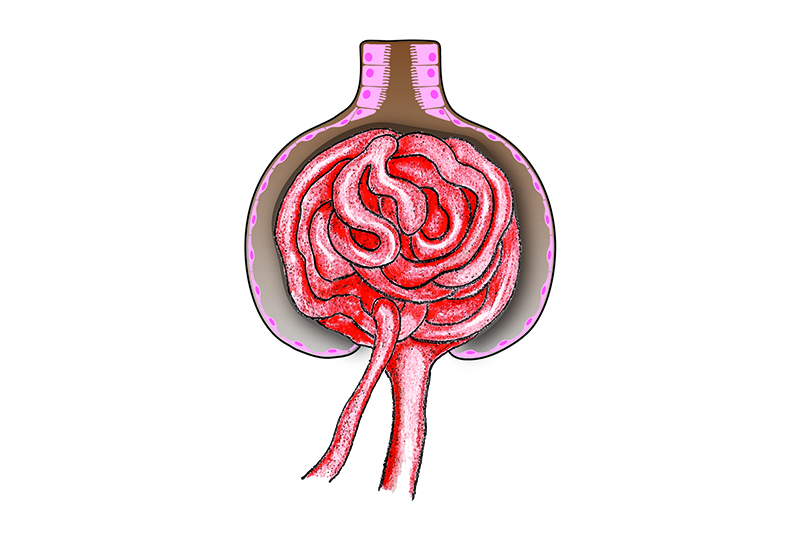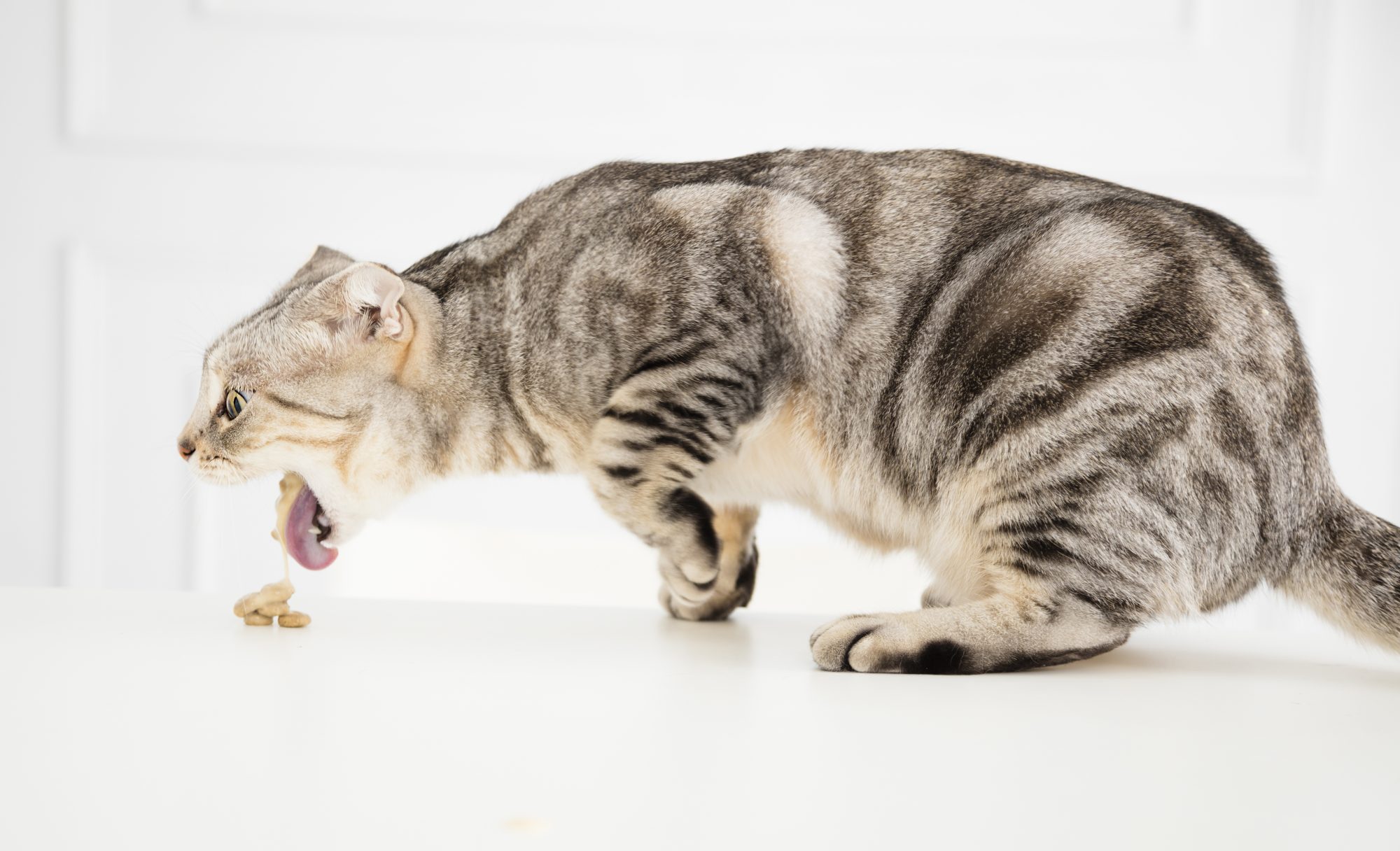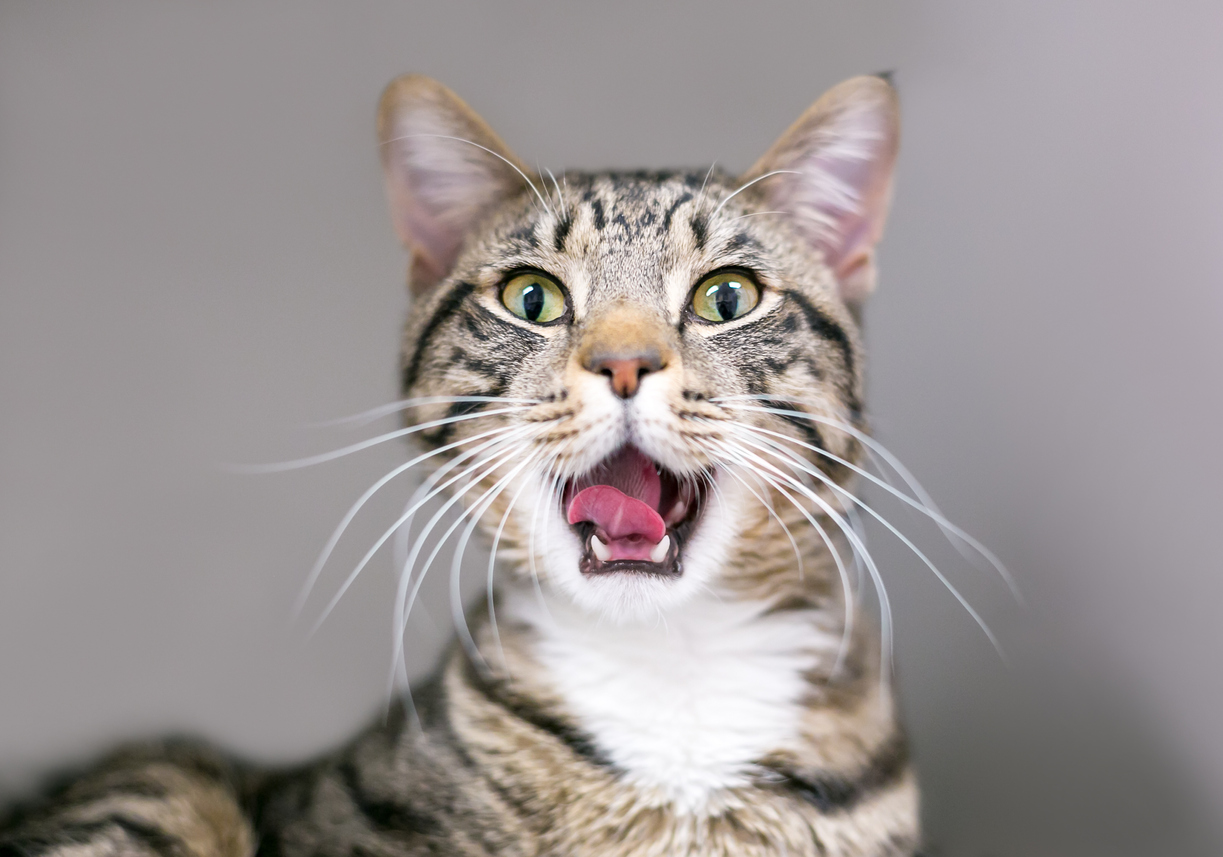Chronic Kidney Disease in cats
What do my cat's kidneys do?
The kidneys have many functions. They principally act to remove waste products from the blood stream, regulate the levels of certain essential minerals such potassium and sodium, conserve water, and produce urine.
What is chronic renal failure? Is it the same as chronic kidney disease?
The kidneys have a large amount of spare capacity to perform their various functions so at least two-thirds (67% to 70%) of the kidneys must be dysfunctional before any clinical signs are seen. In many cases, this means that the damage to the kidneys has been occurring over a number of months or years (chronic) before failure is evident. Chronic renal failure (CRF), or chronic kidney disease (CKD) is mainly a problem in older cats. Only about 10% of the cases occur in cats less than three years old.

What are the clinical signs of chronic kidney failure?
Early signs of disease such as weight loss and poor coat quality are often dismissed as normal aging changes. In the initial stages of kidney failure, the kidneys cope with their inability to efficiently remove waste products by excreting them at a lower concentration over a larger volume (in other words, by producing a larger amount of more dilute urine). Cats will often drink more to compensate for this increased rate of body water loss. This is known as compensated renal failure. After approximately two-thirds of the kidney tissues have failed, there is a rapid rise in waste products in the bloodstream and an apparent sudden onset of severe disease.
What are the causes of CRF?
CRF is the end stage of a number of different disease processes rather than a specific disease in its own right. Diseases or conditions that can eventually lead to CRF include:
- Congenital malformations of the kidneys - such as polycystic kidney disease in long haired cats
- Pyelonephritis - bacterial kidney infections
- Glomerulonephritis - inflammation and damage to the kidney's filtration membrane
- Neoplasia - various tumors of the kidney, most commonly lymphosarcoma
- Amyloidosis - this is the build-up of an unusual protein in the kidney that prevents the kidney from functioning normally
- Viral infections such as feline leukemia virus (FeLV) or feline infectious peritonitis virus (FIP)
- Kidney stones or ureteral stones

How is the disease diagnosed?
Renal disease is usually diagnosed by looking at the level of two biochemical byproducts in the bloodstream, blood urea nitrogen (BUN) and creatinine, in conjunction with the urine specific gravity (USpG). Microalbuminuria (or the presence of small protein molecules in the urine) is another indicator of CRF. Tests to measure the blood levels of other substances such as proteins, potassium, phosphorus, and calcium, as well as the red and white blood cell counts are important in order to determine the extent of kidney failure and the best course of treatment.
Could the renal failure have been diagnosed earlier?
Until recently, early diagnosis of chronic renal failure was very difficult. Neither clinical signs of renal failure nor rises in BUN and creatinine are evident until significant loss of kidney function has occurred.
A recently developed blood test to assess levels of SDMA (a naturally occurring biological indicator for kidney function) has been used to determine if early renal failure is occurring. SDMA concentrations increase above the normal reference interval well before serum creatinine becomes elevated. This will help your veterinarian provide for treatment for your cat at a much earlier stage in the disease.
How will my veterinarian determine the degree kidney failure in my cat?
Your veterinarian will use the IRIS (The International Renal Interest Society) staging system. IRIS staging is based on serum creatinine levels, with sub-staging based on the presence of protein in the urine (as determined by a urine protein:creatinine ratio [UPC]) and measuring your cat’s blood pressure. By using this staging, your veterinarian has a better idea on how to proceed with treatment, monitor progress, and to estimate your pet’s prognosis.

How does CRF affect my cat?
Because the kidneys perform a variety of different functions, the clinical signs of renal failure can be somewhat variable. The most common changes seen are weight loss, poor hair quality, halitosis (bad breath), variable appetite which may be associated with mouth ulcers, lethargy, and depression. Less common signs include increased drinking or urinating, vomiting, diarrhea, and anemia.
What treatments are available?
The treatment of CRF depends on the results of blood tests, and specific treatments are aimed at resolving specific abnormalities. The majority of cats are effectively managed with diet change including supplementation and one or two other treatments. Your veterinarian will work with you to determine the best treatment for your cat.
- Special diets - feeding low protein and low phosphorus diets help lower the level of waste products in the bloodstream. These can be prepared at home or are available ready prepared from your veterinary practice.
- Phosphate binders - despite low phosphate in the diet, blood phosphorus levels remain above normal in some cats. Reducing blood phosphorus can have a major effect on improving your cat's well being and slowing disease progression. Oral phosphate binders such as aluminum hydroxide help to lower the amount of phosphorus absorbed through the gut wall.
- Antibiotics - many cats seem to respond well to antibiotics though the reason for this is not always clear. Cats with CRF develop bladder infections more frequently and routine urine cultures are recommended for many patients.
- Potassium supplementation - cats in renal failure tend to lose too much potassium in the urine. This leads to muscle weakness, stiffness, and poor hair quality. Low potassium levels may also contribute to the worsening of the kidney failure.
- Vitamins B and C - when the failing kidneys are unable to concentrate the urine, these water-soluble vitamins are lost and affected cats need daily supplementation.
- Anti-emetics - for those cats that are experiencing vomiting, the use of anti-emetics (anti-vomiting mediations) reduces nausea, thereby improving appetite.
- Blood-pressure lowering drugs - significant numbers of cats with kidney failure have high blood pressure, which can lead to further damage to the kidneys. In some cases, lowering their blood pressure may be necessary.
- Treatment of anemia - the kidneys initiate the production of red blood cell in the bone marrow. Many cats with CRF are anemic due to a lack of stimulation of the bone marrow. Newer drugs have been developed to help stimulate bone marrow production and may be prescribed for your cat.
What is the cost of treatment?
Treatment costs will vary with each individual case. In the majority of cases, long-term management is relatively inexpensive.
How long can I expect my cat to live?
Unfortunately, once the kidneys are damaged, they have very limited ability to recover. However, with proper management, most CRF cases progress very slowly. With treatment, your cat may have several years of good quality, active life ahead.



